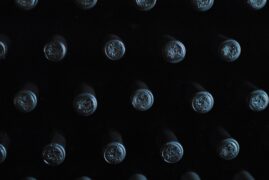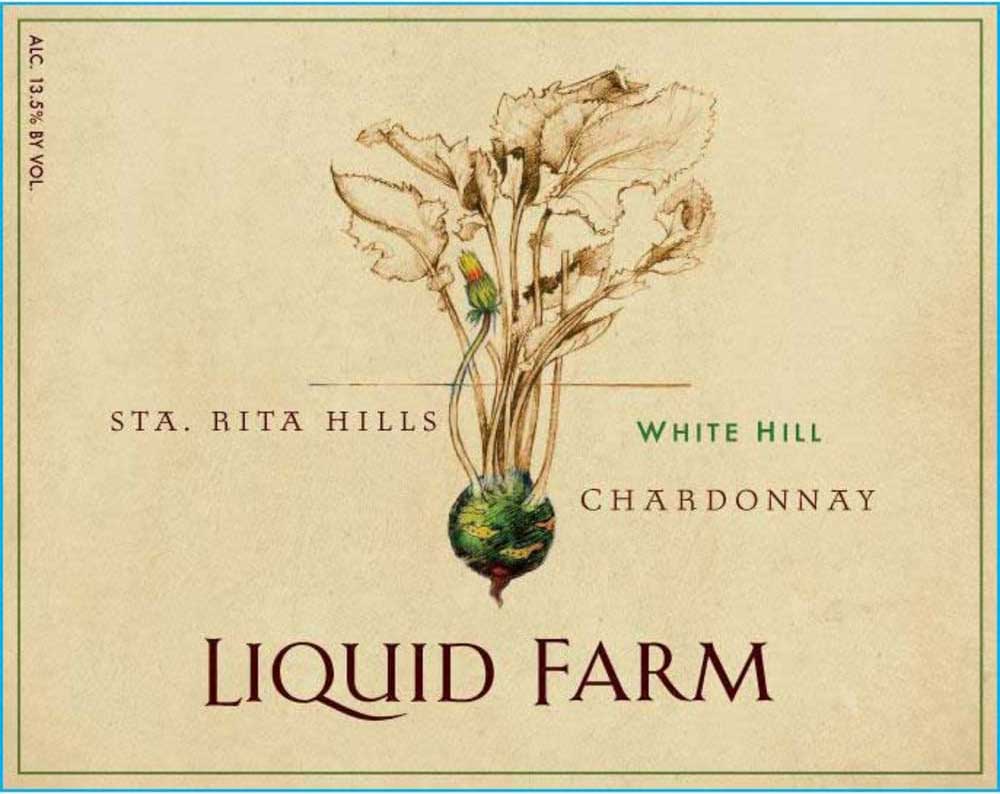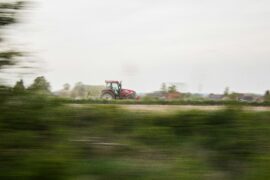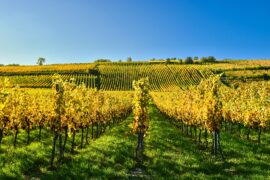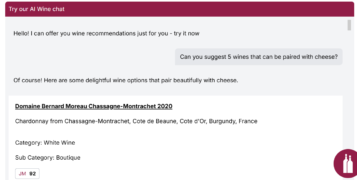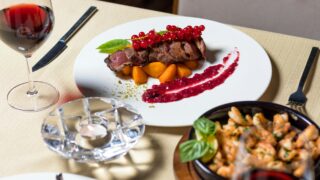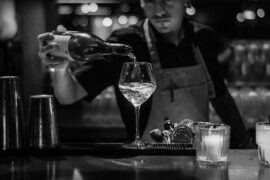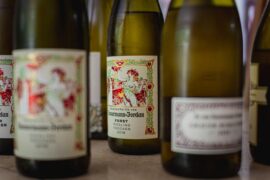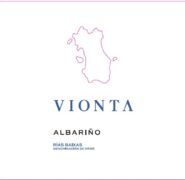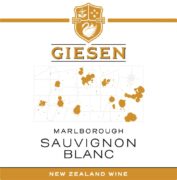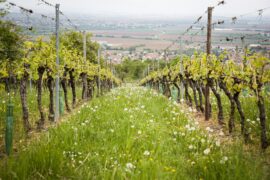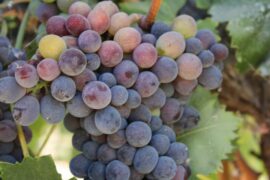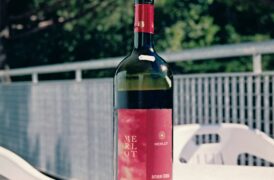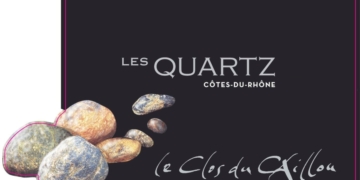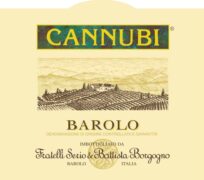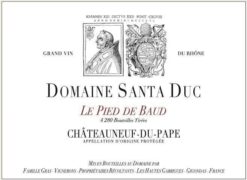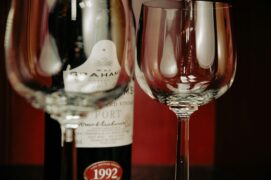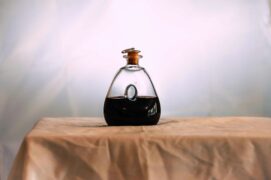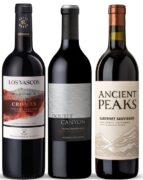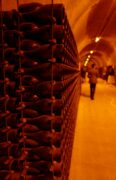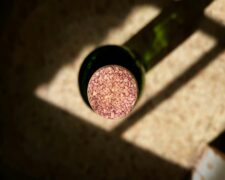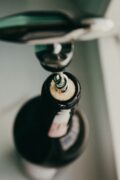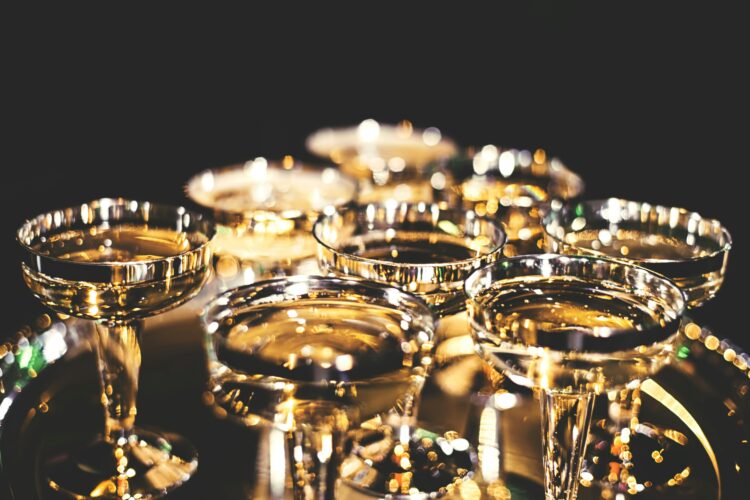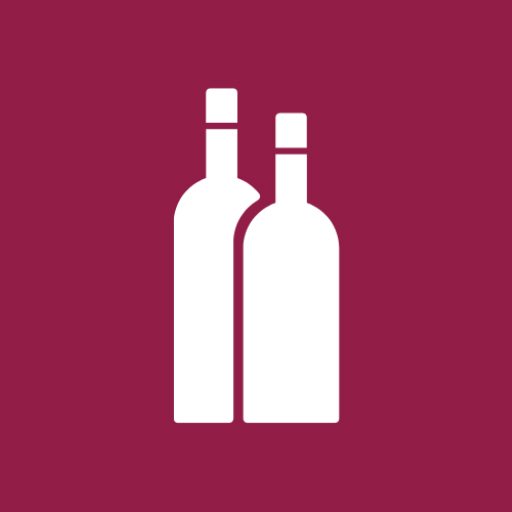It is said that a bottle of champagne contains 49 million bubbles. But how do they actually form? There are various methods of producing sparkling wine, and we’ll go through the most common ones. The base is still white wine without bubbles.
Starting with still base wine
The winemaker begins by making a still base wine. However, sparkling wine does not taste like “still wine plus bubbles,” so the base wine must have certain characteristics.
It needs to be fresh!
At the top of the wish list is high acidity, which ensures that the potential alcohol content is lower, usually around 10%. The base wines are almost always blends of several different wines to smooth out the quality and hide any off-flavors.
Traditional Method
This is the most meticulous and expensive way to produce sparkling wine. Until 1994, it was called the “Champagne method,” a name no longer permitted. The traditional method is also called méthode traditionnelle or méthode classique. Champagne, Cava, and Crémant are the most famous types, but the method is used worldwide. Base wines and grape varieties may vary, but the basic procedure remains the same.
Second fermentation creates bubbles
The finished base wine gets a sugar dose (about 2.4 grams per 100 milliliters) and an addition of yeast to start a new fermentation in the bottle. This creates bubbles and increases the alcohol content by about 1%. The bottle is sealed with a temporary crown cap, and the wine ferments for four to eight weeks.
Aging on the lees adds flavor
Once the fermentation is complete and the bubbles are formed, a sediment of dead yeast cells is left. The longer the wine is aged with the sediment, the more it takes on the character of the yeast. This process is called yeast autolysis. The wine must age on the lees for at least nine months, but in Champagne, the minimum time is set at 15 months. For vintage champagne, the minimum is 36 months.
Remuage – Riddling
This is where things get tricky! The bottles must be shaken and rotated so they move from a horizontal to a vertical position. This allows the yeast sediment to collect at the top of the bottle. When done by hand, the bottles are placed in a wooden rack called a pupitre, and the process takes up to six weeks. Using a machine called a gyropalette, which can hold 504 bottles, this procedure is shortened to three days.
Disgorgement – removing the yeast!
The next critical step is to get rid of the yeast sediment. The neck of the bottle is cooled so the sediment forms an ice plug. The crown cap is removed, and the pressure in the bottle shoots out the plug. Some wine is lost, so the bottle is topped up and a bit of sugar is added, usually 0.5–1.2 grams per 100 milliliters. This mixture of wine and sugar is called dosage.
The bottle is then sealed with a strong cork and a wire cage. This step can be done by hand but is usually automated.
Other methods to create bubbles
The traditional method produces wines with great flavor, but it is expensive and labor-intensive. Therefore, the majority of the world’s sparkling wines are made using other methods.
Transfer Method
Similar to the traditional method, this involves adding sugar and yeast to a still base wine and bottling it. However, the shaking and disgorgement steps are avoided. After some time aging on the lees, the bottles are chilled and emptied into a pressurized tank, where the wine is filtered, sweetened, and re-bottled into new bottles. This method is used in Australia and occasionally in Champagne for very small or very large bottles.
Charmat, Cuve Close, or Tank Method
This is the most common method by volume for producing sparkling wine. The base wine is placed in a pressurized tank, where sugar and yeast are added for a quick fermentation. Once the wine has finished fermenting, it is sweetened to the desired level and bottled. The wine is light, fruity, and aromatic but lacks the complex flavors that yeast autolysis brings. Examples of wines made using this method include Prosecco, Lambrusco, and simpler versions of Sekt in Germany.
Asti Method
Unfermented grape must is mixed with yeast in a pressurized tank. During fermentation, some of the carbon dioxide is released from the tank, and the process is halted when the wine reaches a certain alcohol level (around 6–9%). The remaining carbon dioxide becomes integrated into the wine, creating a sparkling wine with high residual sugar. The wine is chilled to stop fermentation, then clarified, filtered, and bottled. This method is mainly used to produce the sweet Asti Spumante in Italy.
Continuous Method
A variation of the tank method, developed in Russia but used in places like Portugal. The method uses five interconnected pressurized tanks. Yeast is continuously added as the wine moves through the tanks, creating some yeast autolysis. The wine spends about four weeks in the tanks before bottling.
Carbonation Method
In this method, carbon dioxide is simply injected into the wine, usually in a pressurized tank or directly into the bottle. This method produces large bubbles that dissipate quickly and is used only for the simplest sparkling wines, often non-alcoholic.
Méthode Ancestrale, Méthode Rurale, or Pet-Nat
A rare method where a young wine is bottled before all the sugar has fermented into alcohol. Fermentation continues in the bottle, creating carbon dioxide. These wines tend to be slightly sweeter and have lower pressure compared to regular sparkling wines. No sugar is added. This method is used in regions like the Loire and Jura and has gained popularity with the natural wine movement under the name Pet-Nat (pétillant naturel).

